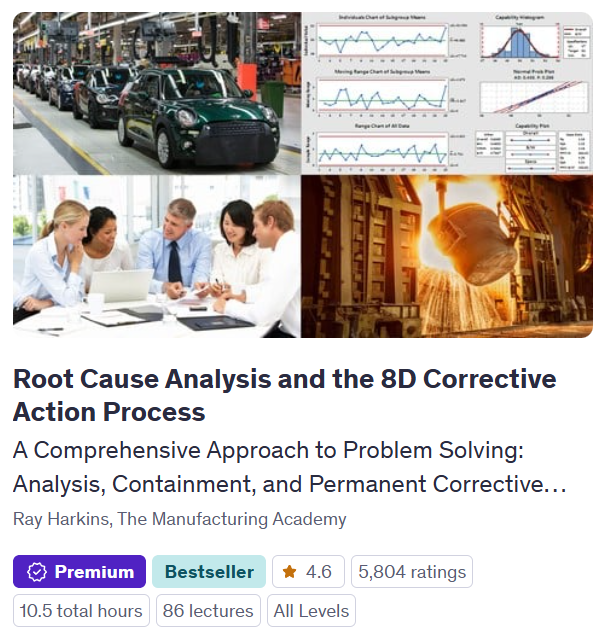Manufacturing companies are struggling with the persistent and growing problem of finding employees with the skills needed to sustain and grow their businesses. This problem is commonly called the “skills gap.” Experts estimate that this skills gap may leave 2.4 million manufacturing positions unfilled through 2028, with a potential economic impact of $2.5 trillion (Deloitte 2018).
One of the key drivers of this gap is the rapid influx of technology into every aspect of manufacturing. New technology of course, requires new skills. In a 2019 article published by McKinsey, analysts identified six emerging trends in facilities management, each requiring new skills and each offering opportunities for career growth. (Adhikari, 2019)
The cost of facilities management worldwide is expected to reach nearly $2 trillion by 2024, 10% to 25% of the total indirect spending for distributed operations like manufacturing and retail. During competitive economic times, this large slice of the spending pie is particularly vulnerable to cuts by top management. The key to competitive costing in facilities management is to reduce these non-core costs without negatively affecting the core operations.
Six trends in business and technology are emerging as strategies for facility managers to evaluate as a means of reducing their costs, increasing the value of their investments and expenses, or both.
Trend #1: Outsourcing Facilities Management
Functions like cleaning and security have been common targets for outsourcing for many decades. With outsourcing estimated to have exceeded 50% of the total facilities management budget, the range of services now includes equipment maintenance and calibration, utility servicing, facility design/re-design, energy management, property management and much more.
As individual outsourcing companies mature in their industry and region, their expertise and cost effectiveness often out-performs the resources and effectiveness of their in-house counterparts.
Trend #2: Integrated Value and Related Services
Today’s facilities managers can explore the possibility of outsourcing a share of their work to a single Integrated Facilities Management (IFM) company. IFM’s offer a team of outsourcing experts and supporting network of suppliers to provide the widening range of outsourced services from equipment and facilities maintenance to employee services like fitness centers and cafeteria management.
The use of IFM’s streamlines the communication and decision making for facility managers and business leaders, and simplifies day-to-day operations.
Trend #3: Workplace Strategy
Workplace strategies refer to a loose collection practices and concepts intended to add value to the organization by adapting the facility to improve employee engagement and retention. These adaptations include modular workspaces that can be readily modified for project-based or flexible work groups; “lifestyle amenities” including daycare facilities, meditation rooms and recreation areas; and wellness-oriented designs including ergonomic furniture, natural lighting and holistic sound management solutions.
While these workplace trends typically increase facility design and maintenance costs, the projected gains in employee productivity may well offset a carefully selected set of these improvements.
Trend #4: Internet of Things (IoT) Evolution
While IoT has had its most apparent impact so far in consumer goods – think Alexia-controlled ceiling fans or Ring doorbells – facilities monitoring and management is ripe for disruption by these “smart” devices and controls.
In the future for instance, sensors on grocery store shelves and warehouse picking racks could trigger automated purchases when the SKU’s reach their re-order point.
Trend #5: Advent of the Robot
While applications of robotic automation are still in their early stages, repetitive or potentially hazardous tasks such as cleaning and security are prime for disruption by robots.
Trend #6: Augmented Reality
Augmented reality – the computer technology that overlays information and virtual objects on real-world scenes in real-time – continues to score entertainment points through apps such as Snapchat and Pokemon Go. But it also has the potential to transform the human experience of facilities like airports or factories. Consider the airline passenger utilizing an AR app that directs them to shopping venues and provides updated departure times, or the maintenance technician using an app to highlight lubrication points on equipment and provide technical specifications.
While these services and technologies are in varying degrees of maturity, senior executives can act immediately to ready their organizations for adoption. The article encourages top leaders to assemble a cross-functional team, aligned with a C-level executive, to begin their investigation of these trends and map out business cases and timelines for their selective adoption.
To ratchet up your manufacturing skill set at an affordable price, check out the variety of quality, manufacturing and business-finance related online courses Ray Harkins teaches on Udemy.com:
Root Cause Analysis and the 8D Corrective Action Process
Return on Investment Analysis for Manufacturing
References:
- Pajula, Wellner and Dollar. “2018 skills gap in manufacturing study”. 2018.
- Adhikari, Hoffman and Lietke. “Six emerging trends in facilities management sourcing”. November 15, 2019.



